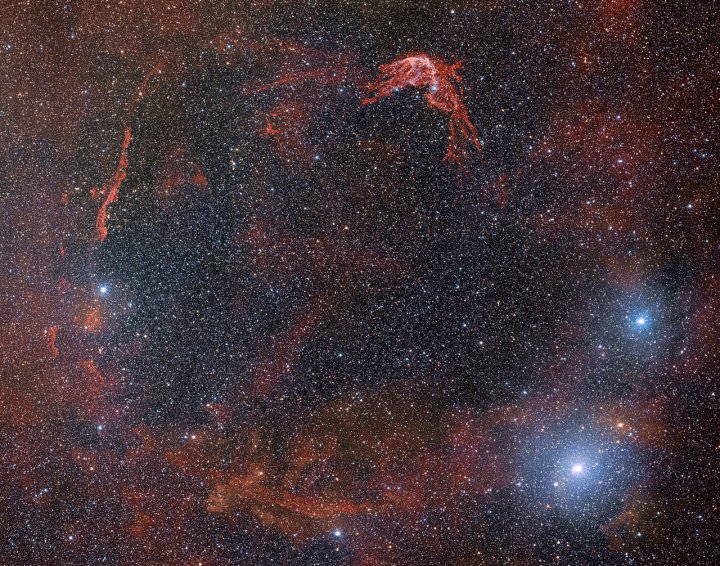Some of the most dramatic events in the universe are supernovae, which happen either when massive stars run out of fuel and come to the end of their lives, or when a star in a binary feeds on its companion until it reaches a critical threshold.
The star explodes outward in a huge outpouring of light and energy, which is bright enough to be seen from other galaxies but quickly fades. After the flash has faded, however, something is left behind: a dense core that can become a black hole or neutron star, and sometimes an elaborate and beautiful structure called a supernova remnant.
Astronomers recently captured one such remnant called RCW 86, which is the result of a supernova that was observed by Chinese astronomers in the year 185 C.E. The image was taken using the Dark Energy Camera at the Víctor M. Blanco 4-meter Telescope at Cerro Tololo Inter-American Observatory in Chile, which was originally designed for use in the Dark Energy Survey but has been used for a variety of research since completing the survey in 2019.

This remnant was created by a supernova called SN 185, which happened 8,000 light-years away between the constellations of Circinus and Centaurus. For a long time, astronomers didn’t think that this supernova could have created such a large remnant in such a relatively short period of time, but in 2006 researchers showed that this remnant expanded at an unusually high speed. That’s how it was able to grow to its size of around 100 light-years across in under 2,000 years.
There are two main types of supernova, those of a type called Type Ia, which is a thermonuclear explosion, and the other types are due to the collapse of a massive star. The SN 185 supernova was as a star hit a critical point of mass, it exploded and sent out high-velocity winds which quickly shaped the dust and gas around it into this remnant.
Editors’ Recommendations
Services Marketplace – Listings, Bookings & Reviews
